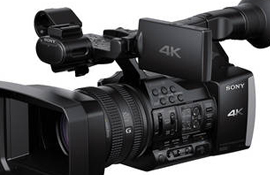 The Consumer Electronics Show, more commonly known as CES, will be taking place next week in Las Vegas. It is there that YouTube will finally demonstrate the 4K video that has been the source of Internet rumors for many months. However, there will be a twist to this demonstration. The video service that is owned by Google will be debuting ultra high-definition streaming that is based on VP9. This is a codec that is new and free of royalties. Google has been in the process of developing it as an H.265 video codec alternative. H.265 is also referred to as High Efficiency Video Coding (HEVC). It is the codec that is used in most TVs that are currently sold. VP9 is at the core of a large amount of other implementations that are 4K-based.
The Consumer Electronics Show, more commonly known as CES, will be taking place next week in Las Vegas. It is there that YouTube will finally demonstrate the 4K video that has been the source of Internet rumors for many months. However, there will be a twist to this demonstration. The video service that is owned by Google will be debuting ultra high-definition streaming that is based on VP9. This is a codec that is new and free of royalties. Google has been in the process of developing it as an H.265 video codec alternative. H.265 is also referred to as High Efficiency Video Coding (HEVC). It is the codec that is used in most TVs that are currently sold. VP9 is at the core of a large amount of other implementations that are 4K-based.
In the past, Google has attempted to establish a commercial video format alternative that is royalty-free and open. Released in 2010, the VP8 video codec by Google was an attempt to create a default format for real-time communications and plugin-free video streaming. However, several things got in the way of those big plans. First of all, many companies that had a vested interest in all of the video formats that have already been established put up a massive amount of opposition. The fact that there was a lack of hardware support did not help matters.
Google is choosing to do things a little differently this time. They have already lined up a group of hardware partners to help with the launch of VP9. The booths operated by Sony, Panasonic and LG will all feature demonstrations of 4K streaming by YouTube. There are currently 19 hardware companies that have partnered with YouTube, pledging their support for VP9. This is according to a list released by YouTube. The list includes consumer electronics giants such as Toshiba, Sharp and Samsung. Chipset vendors Marvell, Broadcom, Intel and ARM are also on the list. Qualcomm and Nvidia have already announced the production of mobile processors. However, it is not clear at the moment whether the chips will utilize on-chip decoders or use specialized accelerators to read various formats for video.
 In a recent interview, YouTube’s global director of platform partnership, Francisco Varela, played down the idea that VP9 is an either-or decision. He said there is not a war of video codecs. He also intimated that there were other announcements regarding 4K for YouTube that are still to come. This has many people in the tech industry believing that there is a possibility that YouTube could eventually add H.265 support.
In a recent interview, YouTube’s global director of platform partnership, Francisco Varela, played down the idea that VP9 is an either-or decision. He said there is not a war of video codecs. He also intimated that there were other announcements regarding 4K for YouTube that are still to come. This has many people in the tech industry believing that there is a possibility that YouTube could eventually add H.265 support.
Varela placed great emphasis on the fact that the codec will help to lower the amount of data that is necessary to stream standard HD videos by as much as 50 percent. It will also allow YouTube to provide resolutions that are higher at bitrates that remain reasonable. This will help YouTube to eliminate buffering and improve the site’s ability to deliver video. Varela believes that by the year 2015, people will be surprised when they see that spinning wheel on their screen.
Varela also added that mobile devices and PCs will be outfitted with VP9 hardware decoding first. In 2015, TVs that support the VP9 format will start to be available. YouTube will not be the only beneficiary of this advance in technology. There are also other video services that want the ability to provide their streams in a manner that is more efficient. These services can also benefit from VP9. Varela believes it is important for the entire ecosystem.
VP9, if it works the way it is supposed to, will use half the required bandwidth that HD videos use when content is being streamed to TVs, PCs, tablets and smartphones. This means a dramatic reduction in buffering.
4K is a more popular name for the Ultra High-Definition (UHD) standard. This has a resolution of 3840 x 2160 pixels. This is roughly four times the Full HD resolution of 1920 x 1080 pixels. 4K TVs have been on the market for quite some time. However, there is not a large amount of content available for them at the moment. This is similar to the lack of content that was available for HD TVs when they first hit the market.

